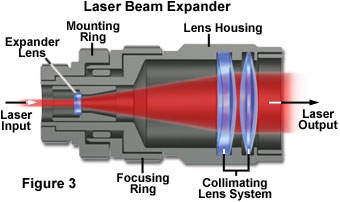Yes a large PCX is a good choice for use with high divergence MM beams, the lens in those projection TV housings are aspheric and make huge wings when I have tested them.
They could be made to work, but I don't think there the optimum shape......I have seen beam expanders with a double output lens arrangement, but the more uncoated glass the more parasitic loss.

Yes, that's why I am thinking a long FL very " thin in the middle " PCX because it's the more aggressive curve near the edges that throws the wings, or so it seems, granted I have not worked with all the lenses I have, but I have seen what you are describing.....maybe a thick edged PCX such as a larger lens with the outer circumference reduced so the edge is thick........there's experimenting yet to be done. :beer:
This 350mm FL would need 14 inches from your G2 that would be focused so that it's beam crossed over and printed to cover 80% of this 3 inch wide lens around 14 inches away, but that's positive/positive. Really correcting the MM beam 1st is the best way, then expanding with a concave to print on a PCX. That's what seems to be the best way from what I have read.
https://www.ebay.com/itm/NEWPORT-OR...m=222873847295&_trksid=p2047675.c100005.m1851
A few comments. The Light Machinery Gaussian Beam Propagation app assumes thin lenses. I infer that's because thick lenses introduce aberrations such as the wings we complain about. Inferring some more if laser companies would start using wider lenses with longer focal length lenses those wings might he eliminated. I remember measuring the focal lengths of early green dpss laser pointer and the focal lengths were about 15mm, whereas G lenses have focal lengths of about 4mm.I think I wrote that wrong, I meant, I am not sure what that thick lens will produce with a mere 75 mm of focal length, that is fairly short compared to the results I was able to get with a large 300 mm FL PCX lens with the relatively shallow curve, I just can't see at that camera angle if that thick lens has a relatively shallow curve, it may not need as much curve though, it makes sense, with a given refractive index, a thicker lens will require less curve.
Last edited:



